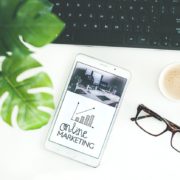
Working on your own as a freelance creative means everything is up to you. Clients will sometimes provide access to various programs you might need to use to complete a job, but for the most part, you are expected to take care of every aspect of the business. One thing many freelance creative economy employees frequently overlook or don’t treat with the seriousness it deserves is their cybersecurity.
Cybercrime is on the rise and this looks like it will be the trend for many years to come–perhaps indefinitely. With that in mind, below are 5 cybersecurity tips for freelance creatives to keep in mind when setting up and running their business.
The Complexities of Remote Work
Freelance creative work is remote work, which means flexibility and, in many ways, freedom, but it also comes with some major downsides. Working on your own, far from the IT infrastructure of a big company with deep pockets, means it is up to you to work remotely safely and responsibly.
There are many things you can do to make remote work life more efficient and productive, from designating and maintaining a dedicated workspace, to scheduling breaks and making sure you stay proactive with your communication. Within the realm of cybersecurity, clients often want to know what you are doing to keep their data safe and the extent of your knowledge regarding current threats, trends and best practices.
Use Two-Factor Authentication Wherever Possible
Every piece of software and subscription service you use to run your freelance creative business requires you to log in, proving you are who you say you are. The most common type of authentication process is a single-factor one. You enter in your email and associated password and you’re in. A much safer method is multi-factor authentication (e.g. 2FA), which usually takes the form of a password and a security question.
Two-factor authentication is a cybersecurity best practice whether you are running a business and working with sensitive client data or not, and it is something that has become increasingly normalized in the cybercrime-filled pandemic era. If your clients ask you what measures you take to keep your and their data safe, emphasizing your use of two (or more) factor authentication is sure to put minds at ease.
Back-up Data
The “security” in cybersecurity also refers to securing your data against catastrophic loss, which can happen for a variety of reasons, and not all of them because a cybercriminal hacked or extorted you. People lose their laptops and computers all the time. They are stolen or damaged beyond repair while in transit. Computers are destroyed in fires frequently.
Backing up data can be done either on a separate piece of hardware like an external hard drive or using a cloud storage system that you regularly upload all of your data to. The advantage of the former is that it is on a physical device in your possession that can only be stolen, not hacked. You can get terabytes worth of external storage for a reasonable price. With cloud storage, there is no physical device to carry around, but data breaches are still a possibility.
Make Use of a VPN
Using a VPN is always a good idea, whether you are a remote freelance worker or not. VPNs provide end-to-end encryption of your data and obscure your IP address, making it difficult to impossible, depending on your service, for anyone to intercept your data or see what you are doing online.
A VPN is additionally helpful because it helps mitigate your risk when using any public network which, as mentioned, is an inevitability when working as a freelance creative, digital nomad or otherwise.
Don’t Work on Unsecured Networks
The image of the freelance creative working in a restaurant or cafe over a beer or coffee is a true one and it is one of the great things about this kind of work-life. Working in public, however, also means subjecting yourself to the many cybersecurity threats that exist when you are using a public network. These networks are often open and unsecured, meaning that anyone who wants to intercept data or do a bit of snooping, with a little bit of work and some know-how, can do just that.
The best thing you can do is to avoid working on unsecured networks. It is not always feasible to do this all the time, as many freelance creatives are also digital nomads, and don’t have fixed addresses or private networks that belong exclusively to them. There are ways to make free public networks safer for you and your clients.
Educate Yourself
The biggest cybersecurity threat to any company is typically its employees. This isn’t because most companies are full of nefarious people, but because so many employees are worryingly ill-informed on the threats and risks they encounter in the course of doing their jobs. The same holds true for freelance digital creatives.
As a freelance worker you are also vulnerable to cybercrime, and knowing what to look out for and how to take preventative measures could save you and your business a tremendous amount of time and money. This includes understanding the latest phishing, malware and ransomware techniques, different ways to remove a virus from a Mac or a different type of computer and how to spot suspicious emails, websites and links. There is a big list of best IT services companies that were successful in the past, but as they failed to keep up with the technological changes, they lost their way.
Conclusion
As a freelance worker in a creative industry, you get to use your mind and its creations to make a living and do so on your own terms. You are on your own, but you are free to make the life and business you would like to. All of this, however, also leaves you exposed, meaning you are solely responsible for your cybersecurity. Keep the above tips in mind when working from home, a shared workspace, cafe or restaurant anywhere in the world and keep your business and clients’ information safe and secure.

